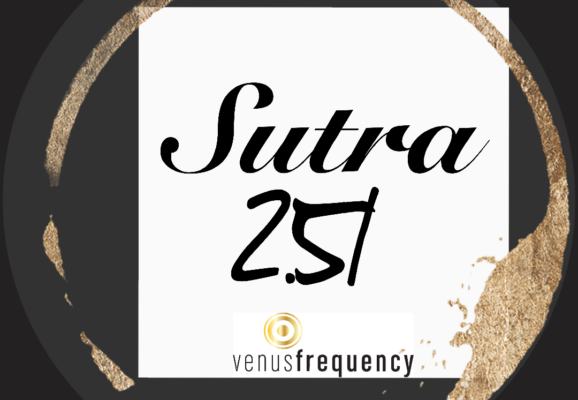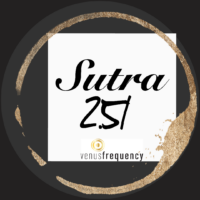In Yoga Sutra Study 2.51 Patanjali describes the fourth (chaturthah) type of pranayama: the natural cessation of breathe that often accompanies intense concentration. The first three pranayamas, control of inhalation, exhalation, or holding the breath, are intentional; these are the objects of pranayama practice. But this fourth subconscious and unintended restraint of the breath gives us insight into the overall practice of yoga.
As with any worthwhile pursuit, the goal of yoga can be seen as self-wisdom, the understanding of our deepest natures. The Taittiriya Upanishad describes the individual as a layered composite of different yet related characteristics. Most external is the physical sheath, our bodies, underlain by the vital sheath, closely related to the breath. Beneath that lies the mind, then the sheath of wisdom. At the core of these self-identities is that which is called joy. Our purpose in practice is to delve into this deepest joy.
SAT CHIT ANANDA
There is nothing more essential to our health and well-being than breathing: take air in, let it out, repeat 25,000 times a day. Yet, as a species, humans have lost the ability to breathe correctly, with grave consequences and we have the power to reverse this anytime, pay more attention to your powerful, beautiful, magical breath, the yogic philosophy suggests and put it into action.
And then there is MUSIC, Music can also stimulate the mind, body, spirit. There are many things in music, to which one can listen and bring attention. One can be mindful of the melodies or themes, the harmony, the driving or relaxed rhythms, the color of the sounds, they lyrics, the words, the storytelling, the activity of a piece, how the sounds are produced, or how they all relate to one another, all while, possibly figuring out how the musicians conceived the piece. Focused and attentive listening is an incredible experience that allows one to be lost in a foreign sound world. And todays’ carefully curated for you by me, every week, new original material SOUND WORLD, lets you figure out how these musicians conceived their pieces…
PRANAYAMA, BREATH…. BREATHE… my friends…
For example Swami Satchidananda compares yoga practice with moving water from one place to another. When frozen as ice, we can easily place the water where we want it. If liquid, we must first find a bucket or dig a ditch. The most difficult form of water to control is steam. Though ice, liquid water, and steam are all the same substance, they take on different characteristics from more gross to more subtle. The same is true for our identities. The body is the most gross form, and in many ways the easiest to control. Our deepest identity, joy, is both subtle and elusive, difficult to grasp.
We have all experienced moments of intense engagement when we discover that our breath has stopped. When we concentrate deeply, whether on external objects (bahya vishaya) or on images or ideas within our minds (abhyantara vishaya), our breath may similarly pause. This clues us to the close link between breath and mind (in the previous model they are adjacent sheaths). If the mind can stop the breath, then it stands to reason that the breath may also have the power to stop the mind. Which is easier? The gross breath may more easily influence the subtle mind.
So, in our practice, we begin simply. We first learn to control the body, and having accomplished this with some success, we focus on the control of the breath. When breath is controlled, the mind begins to naturally settle, opening the doorway to the control, or expression of, true wisdom. And finally, though subtle and elusive, we may peel back the final layer and discover our own joy. Our own eternity our own wisdom. SAT CHIT ANANDA But before any of this occurs, we must work towards concentration. We must throw (akshepi) ourselves fully into practice. …
WE practice some pranayama techniques on Sunday’s FREE offering from me to you, the Gayatri Mantra Gathering at 7pm Vienna time, check it out via the schedule and sign up found on www.VENUSfrequency.com yayyyyyyyyyy
… VENUSfrequency, like VENUS the powerful second planet from the sun, named after the ROMAN goddess of love and beauty. Called SHUKRA in SANSKRIT and VEDANTA terms, which means, “lucid, bright, clear”






















